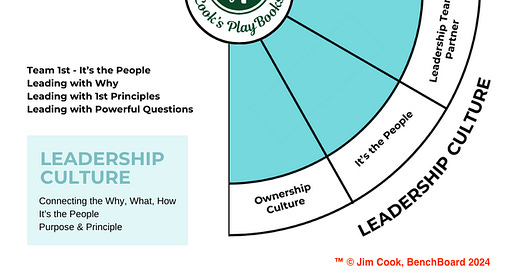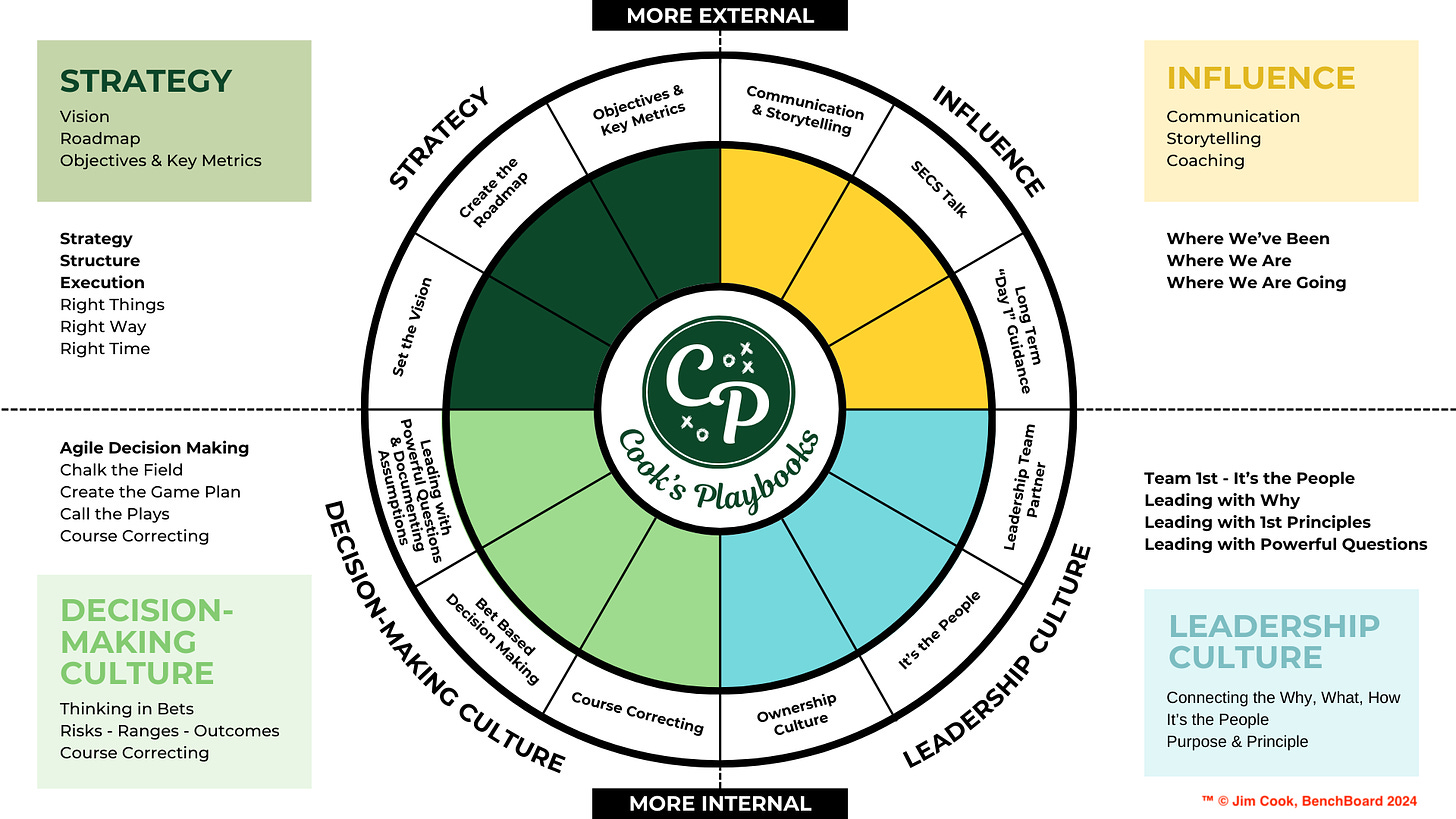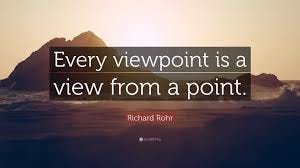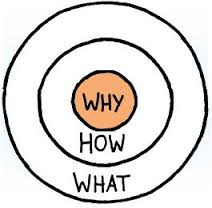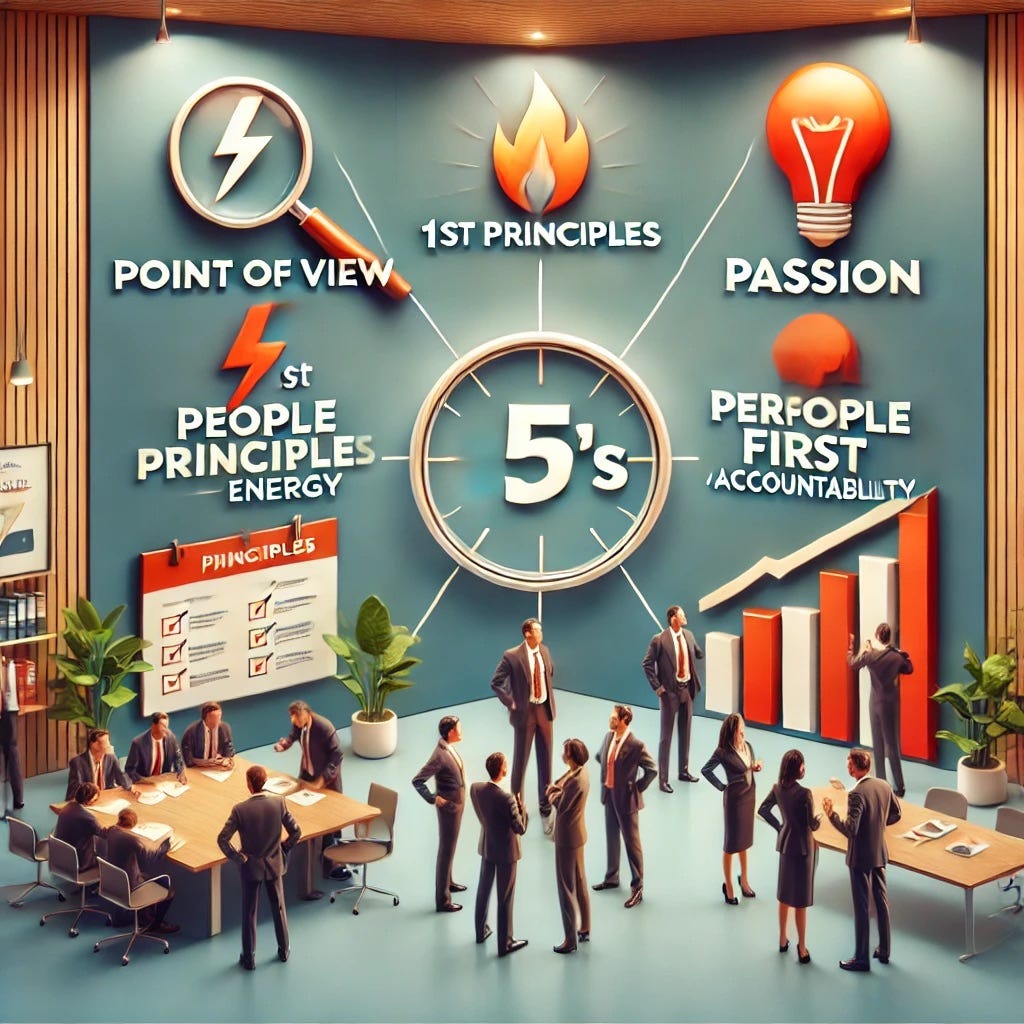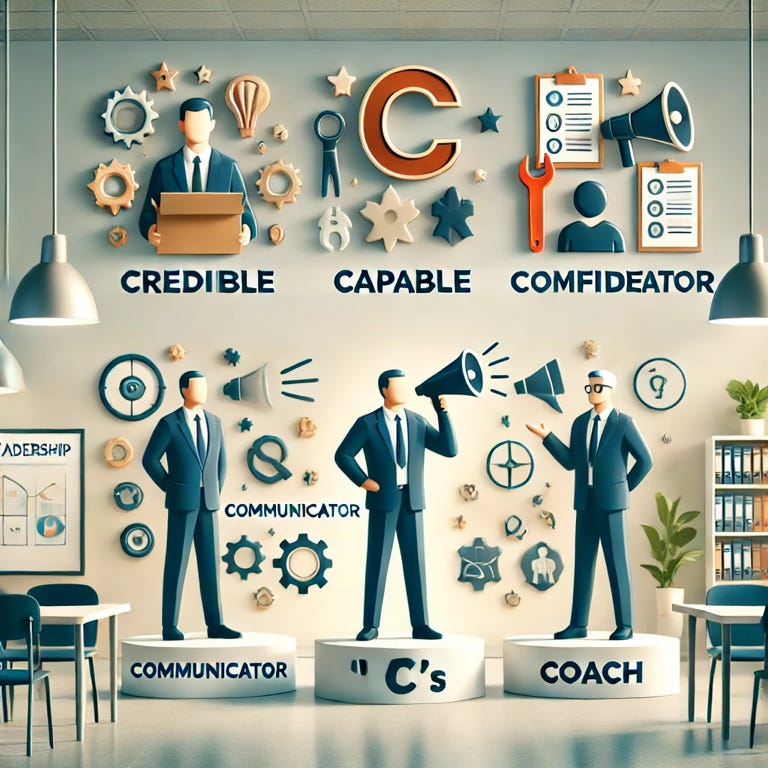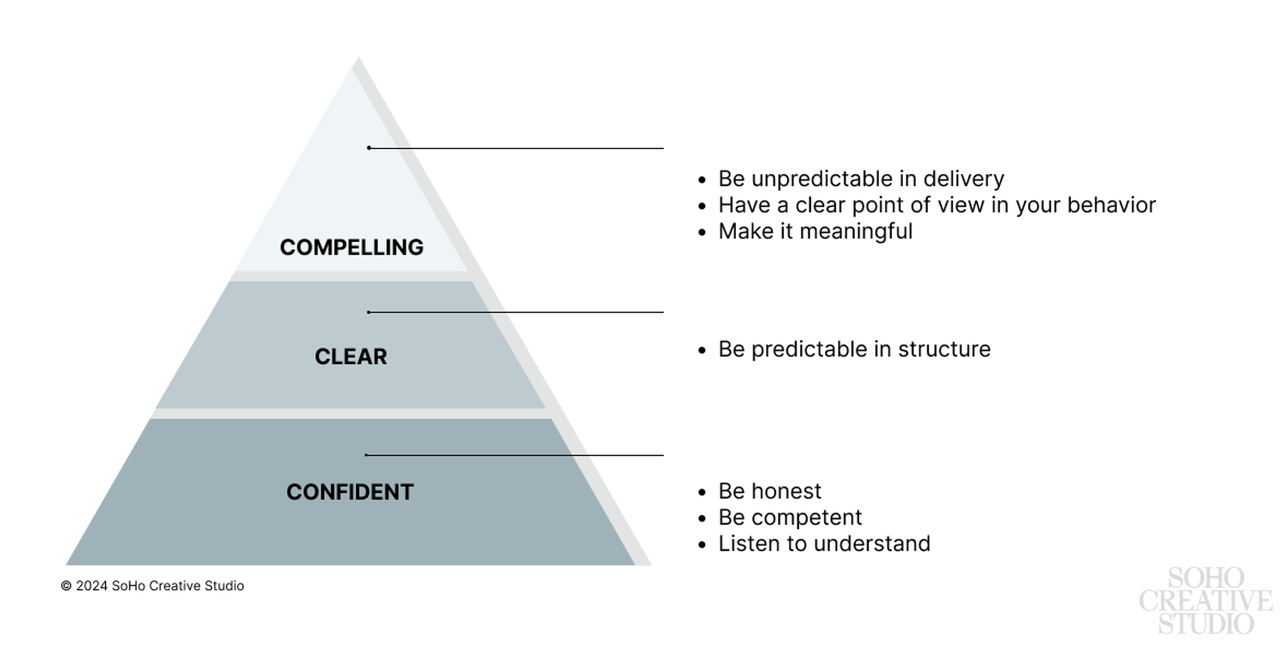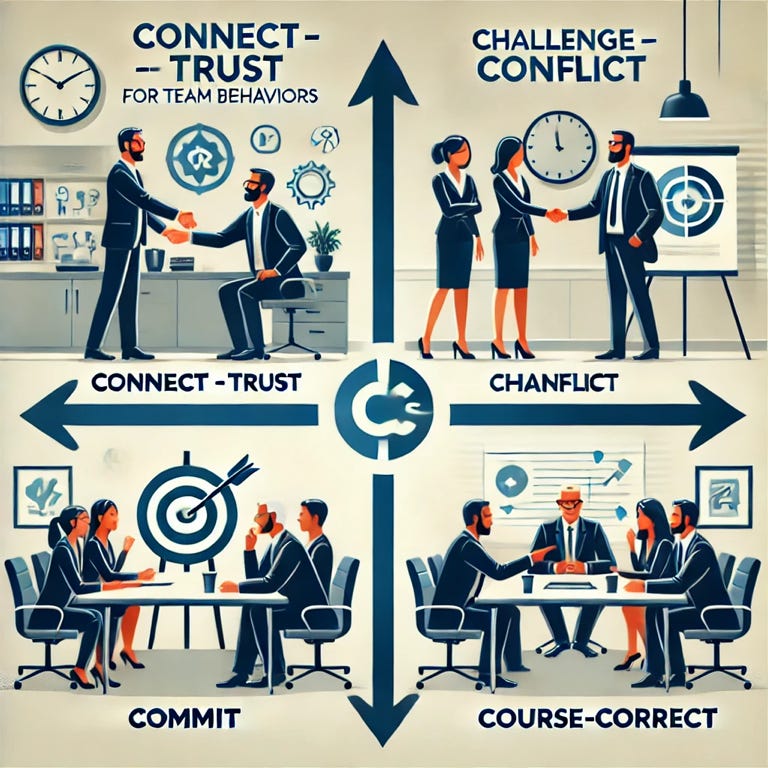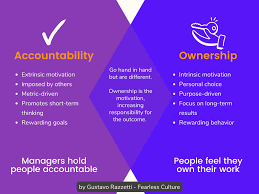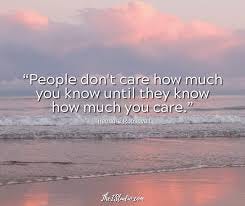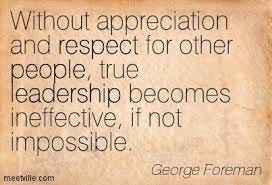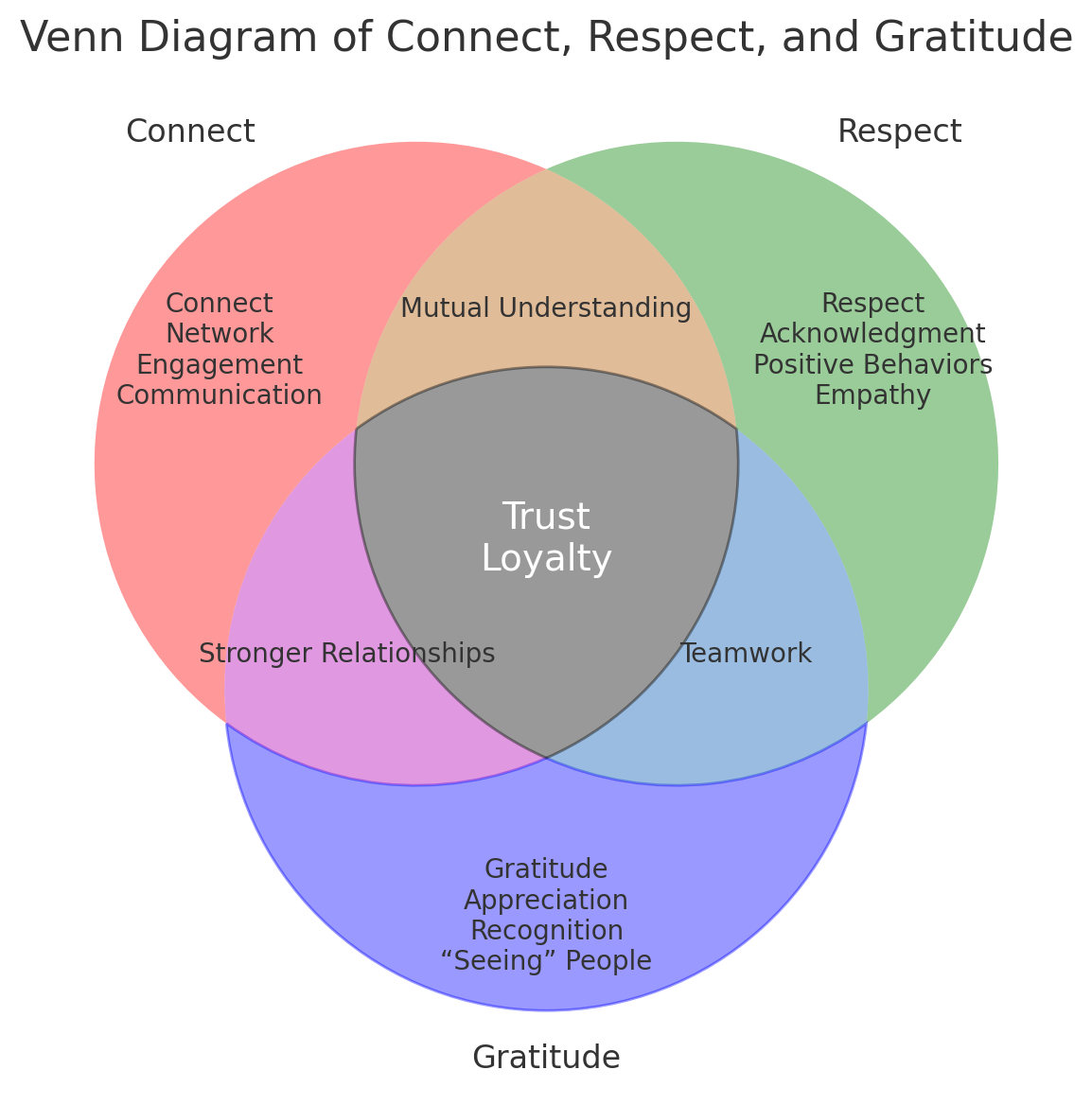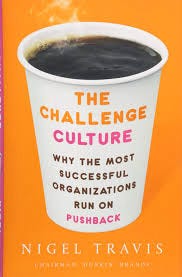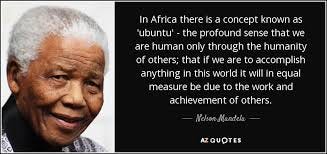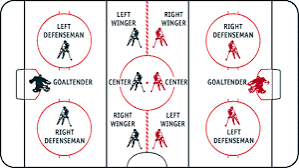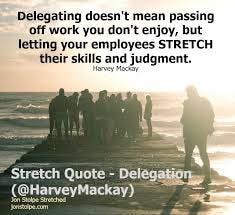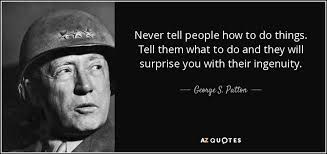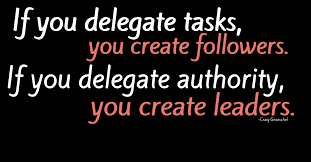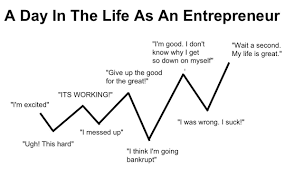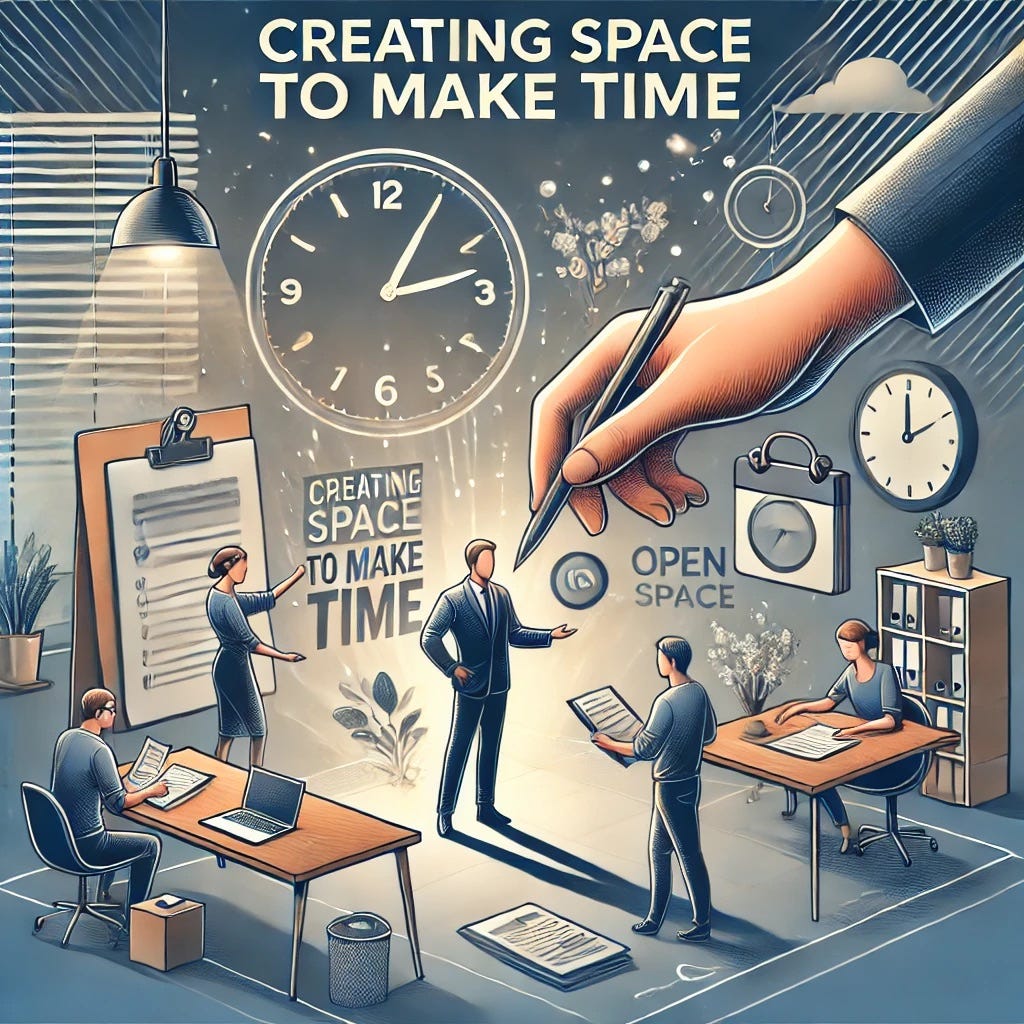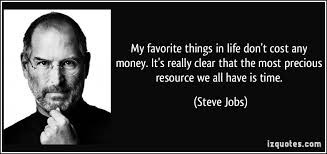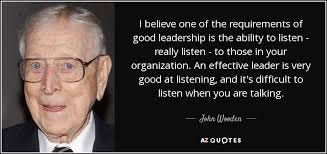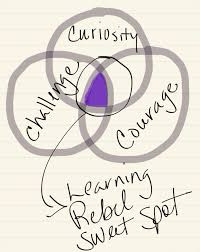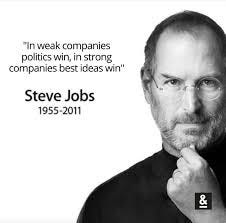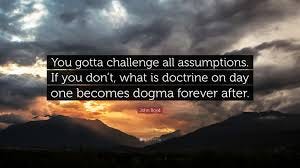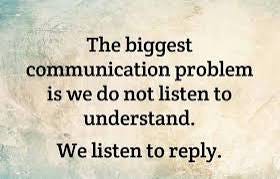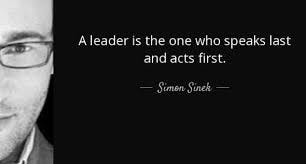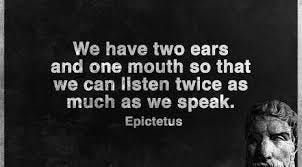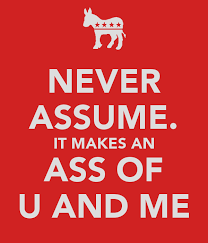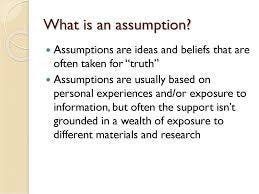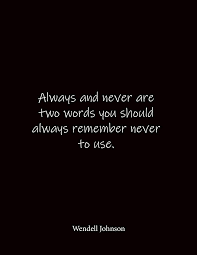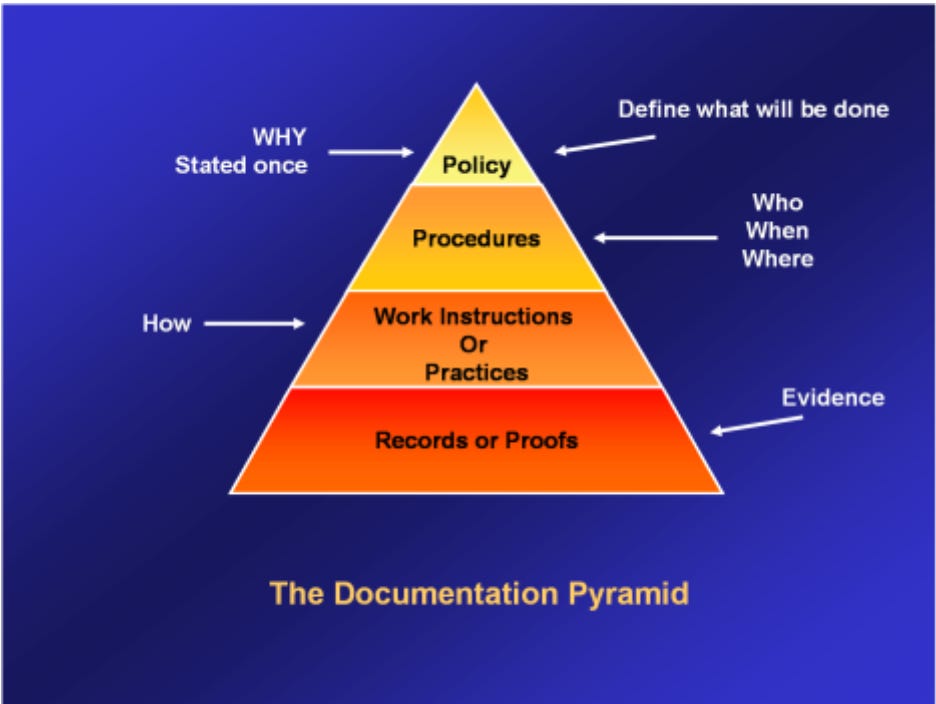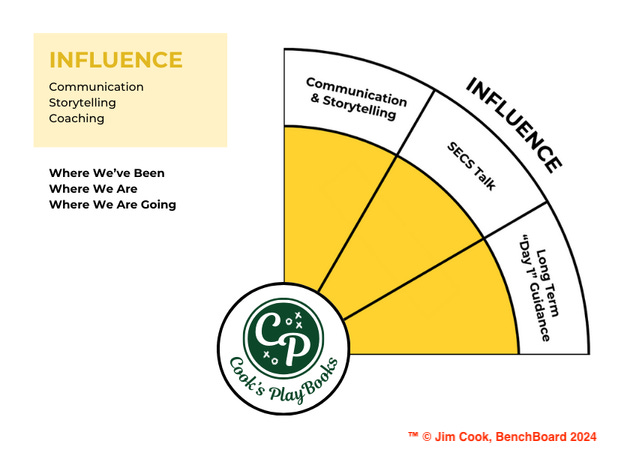It’s time to get back to rounding out Cook’s Corners of Leadership from my Top Level Framework (Post 2 - graphic below). Over the past several weeks, we’ve covered the Strategy Corner and the Decision Making Corner (3 Part Series) and the next corner is the LEADERSHIP CULTURE (lower right).
This week I’m leading with a simple list of Top 20 Leadership Culture frameworks (mental models). I’ll be going much deeper in future posts on many of these frameworks so hit the Subscribe button to get these delivered to your inbox weekly.
As I was preparing this week’s newsletter, I was reminded my guest podcast appearance with CJ Gustafson (Run the Numbers) where he asked me to discuss a few Leadership Frameworks. We ended up discussing 7 of these frameworks a year ago.
A few days ago a friend/neighbor, Andy Byrne - CEO of Clari, posted on LinkedIn similar questions on leadership. It was one of those moments where, like a songwriter, a top 10 list poured out of me in about 10 minutes and I added my thoughts in the comments on that post.
With those two sources as a starting point, I opened up my “Best Of” files on “Leadership” I’ve collected and curated over the last 20+ years, and it ended being my own Top 20 list.
TOP 20 LEADERSHIP FRAMEWORKS:
“Mind the Gap” between Expectations and Reality
Leaders must lead with a Clear Point of View (PoV)
Connect and lead with Why, What, and How
Create an “Ownership Culture”
5 C’s (Criteria) for Leadership
5 P’s of Leadership
4 C’s: Critical Team Behaviors
Share & Ask; NOT Show & Tell
Connect - Respect - Gratitude
Trust requires Transparency; Transparency is the foundation of Trust
“Challenge Culture;” Great leaders create this kind of culture
Team 1st & 1st Team
Zoom Out to Zoom In
Play Your Position
Chief Juggling Officer
Hang On! Hold On! - leadership is a rollercoaster
People are Watching
Leaders create Space; Space creates Time
Time is your most valuable resource
Listening Tours
Please post your favorites in the comments and/or add your own.
Let’s unpack all 20 of these with some quick high level summaries. I’ll be writing more in depth about several of these in upcoming posts. Though this post is super long and I’m sure it will be met with TL;DR (too long, didn’t read), I felt it was important to put all 20 Leadership Frameworks in one post for future reference.
#1 - “Mind the Gap” Between Expectations and Reality:
I love the phrase “Mind the Gap,” first hearing it in the London Underground. Problems begin in leadership and relationships when there is a gap between Expectations and Reality. Suffice it to say this gap in “Expectations” is where most conflict occurs. Be as transparent as you can be with your expectations early and often. If you find yourself in conflict, then rewind in order to re-align. Start over in the conversation and now start with expectations and desired outcomes of both parties. You’ll be amazed at how much better the conversation now becomes since you are now Minding the Gap.
#2 - Leaders Must Lead with a Clear Point of View (PoV):
Leadership is not possible without a clear view (vision) of where you, the team, or the company are going. This point of view also applies to beliefs and assumptions that apply to critical decisions.
Everyone needs to lead or simply express their own point of view. No one person will likely ever be 100% right nor 100% wrong. Together, the goal is for everyone to learn something from each other. Learning will only happen, however, if everyone offers their own point of view.
#3 - Connect the Why, What, and How:
If the phrase “Strategy, Structure, Execution” is ringing in your head, then gold stars for reading my past newsletters or for working with me in the past. The below is a classic Simon Sinek drawing (I think). Yes, he Starts with Why. I’ve changed this to “Lead with Why.” But don’t ever forget to always connect the What and the How back so the Why is always the bullseye.
#4 - The 5 P’s of Leadership
PoV (Point of View)
Principle-Based Leadership
Passion (Energy)
People First
Performance (Accountability)
Note: ChatGPT (DallE) keeps getting close… but I’m not spending any more time on trying to get this image perfect.#5 - The 5 C’s (Criteria) for Leadership
Credible
Capable
Confident
Communicator
Coach
If you want only 3 C’s then definitely be Compelling, Clear, and Confident.
#6 - The 4 C’s for Team Behaviors
Connect - Trust
Challenge - Conflict
Commit
Course-Correct
Note: ChatGPT consistently gets at least one word wrong! It’s almost like the game of “find what’s wrong with this picture.”#7 - Create an “Ownership Culture”
Everyone should be the CEO of their area. Everyone should “Own” their “Product” and deliver it to their “Customer” to achieve their highest satisfaction. I’ll write a separate post on this in the future. I talk A LOT about this with my Executive Coaching clients.
Bottom line on this “Ownership Culture:” Everyone has a product they “own” and they deliver to a customer or set of customers. Once you begin leading your career by truly “owning” your product, your leadership impact takes on new meaning.
#8 - Share & Ask; NOT Show & Tell
We’re taught to “Show and Tell” from Kindergarten. This has progressed to dreaded PowerPoints as we’ve continued to try to impress. Many leaders also have embraced the “Telling” part thinking by being directive it makes them a better leader. News flash… this is wrong.
Try “Sharing” and “Asking." Sharing takes many forms but one of my favorites is “Showing your work” and leading with, “This is what I did” and “This is why I did it.” Yes, a form of “Show,” but I like “Sharing” better.
Now “Ask” for others’ points of view and ask, “What are we missing?” or a whole series of other questions (“Asks”). This “Showing and Asking” will nearly always yield better results of shared understanding and shared desired outcomes.
“Ask. Repeat the Hard Parts. Listen.” Straight from the Decision Making Series over the last 3 weeks. It was worth repeating! Go back and read this excerpt if needed.
#9 - Connect - Respect - Gratitude
About 3 years ago, I picked up 3 beautiful rocks polished by the ocean while walking on a pristine beach in Baja, CA. While I was walking, I named them “Connect, Respect, Gratitude.” Baja does this to one’s brain. I wanted to connect the amazing place and the serenity I was feeling back to my Silicon Valley leadership world. I spent the next 2 miles rubbing each rock between my fingers while repeating each mantra. These rocks remain housed on my bedside table back in the Bay Area as a physical reminder to what’s really important in life… and business.
Connect: Find your own way to “see other people” and to let your guard down and have them “see you.” The power of this is exponential.
Respect: Ask, “What do you think?”
Gratitude: Take time to both privately and publicly recognize and reward impacts at all levels.
I also of course asked ChatGPT to create me a Venn Diagram. It did a pretty good job. I edited only slightly.
#10 - Trust Requires Transparency; Transparency is the Foundation of Trust
“Trust” = Consistency over Time: I don’t need to agree with you to trust you… but I do need to know where you stand, why you hold your position, and to also know we can disagree respectfully and most importantly you won’t stab me in the back or talk behind my back.
”Trust could be one of your most valuable company assets. As a leader, you need to fight like hell to protect it. If you are successful in protecting trust, you’ll actually grow much faster and have a culture where people love coming to work and working together toward common values and common goals.”
- Modified from Chris Moody’s guest post on Brad Feld’s blog “Trust Can Scale”
Trust means speaking the truth… especially to power.
Leaders need to own the role of Chief Trust Officer from operational rooms to the board room.
#11 - Great Leaders Create a “Challenge Culture”
Leaders challenge everyone for greatness
Leaders challenge assumptions (respectfully)
Leaders challenge status quo
“Kaizen” - change for the better
#12 - Team 1st & 1st Team
I believe everyone has at least one great teacher or mentor in their life. One of mine was my soccer coach Joe Moore (8th grade - 12th grade) and one of his many leadership phrases, “We win as a team, and we lose as a team!” Coach Moore would never let anyone blame anyone else for a loss or praise one person for the win. A powerful lesson I’ve carried with me ever since.
Teams are about People. When I left Intuit, I was given a sterling silver pen (yes, they did such stuff back then). Inscribed on it was “It’s the People” - a phrase I was known for contributing to Intuit’s VMOVA principles (Vision, Mission, Operating Values, Achievements).
Ubuntu is also a powerful African philosophy - the essence of we are all interconnected. The essence of a true team. In terms of leadership, I translate Ubuntu to “Your leadership behaviors and actions have a compounding effect on your team. Your leadership does not and can not exist in isolation. You are the leader only because your team exists.”
Bottom Line: Take care of your team, take care of people, and they will always take care of you (and have your back) as a leader.
#13 - Play Your Position
Don’t play other Exec Leadership Team positions… especially if you are the CEO. Leaders at all levels must delegate and trust as much as possible.
If you aren’t delegating as a leader you are diminishing and not creating future leaders.
#14 - Zoom Out to Zoom In
When stuck, zoom out then zoom back in. Take a deep breath. Take a walk. Take time to rise above and survey the situation from a different perspective. Think about what has to be true and your unchanging 1st principles, now Zoom back in.
#15 - Leader = Chief Juggling Officer
Importantly not all balls you are juggling are equal. Some are fragile (health, family, etc.) while others are more rubber and will likely bounce back up. Juggle your balls carefully and don’t juggle too many at a time.
#16 - Leadership is a Rollercoaster
Hands up! Hold on! Things are awesome? Get prepared for the trough/crash… vice versa… start climbing that hill again with hands up and smiles. Learn to moderate the highs and lows and keep longer term perspective.
#17 - People Are Watching
The higher your leadership position the closer people watch you. Specifically, they listen very carefully to what you say, how you say it, as well as what you do (your actions) and how you “do it” (your behaviors). Yes, humans are great at picking apart the surprisingly smallest of details. Being consistent with your words and behaviors is critically important as a leader. When a natural gap or inconsistency appears (“mind the gap”), address the gap head on, transparently, and authentically. Close the gaps by repeating what you want people to remember at least 7 times, 7 different ways.
#18 - Leaders Create Space
Leadership is about creating space where people are excited and capable to not only do the hard work but perform at higher levels than even they thought they could.
A space-time continuum exists in business as well. Creating space expands your teams capabilities and speeds up the time to solve problems by crowdsourcing the right answers.
So create space by delegating as much as you can. If you aren’t delegating enough, you are diminishing your team and diminishing yourself and your ability to create enough space-time.
#19 - Space Creates Time
Time is your most valuable resource. By creating space, you create time, and time enables you to keep thinking 12-18+ months ahead starting with the Strategic corner.
Time is the one common variable found in nearly all leadership regret. Don’t waste it.
#20 - Listening Tours
Make time for listening tours. Make time to hang out in the company kitchen or coffee area. At Mozilla, we ended up buying espresso machines in all our company kitchens. It took me awhile to understand how a “maker/innovative culture” combined with “training people how to make great espresso” brought teams together on a regular basis (especially new employees). Shout out to any Mozillians who are reading this and remember. Feel free to add to this thought in the comments.
When structuring your listening tours, understand you are gathering data and looking for patterns. This means you need to be truly listening and the only time you are talking is to ask the next question. It’s not your job on a listening tour to defend or rebut the natural negativity you may hear. Your job is to take detailed notes and to truly only listen. Try to structure consistent, open ended questions that can be asked across at least 5 different groups of “customers” ranging from board, investors, CEO, other execs, your direct reports, and potentially other teams who interact with your team. The questions you create should center around “customer satisfaction” of your “product” and defining your customer requirements on what they need, what they would like to see, or how you can improve.
Key Leadership Behaviors
So, those are my top 20 leadership frameworks. Now, a quick word on delivering this impact with some key behaviors and disciplines.
Be a Curious Learner. Model “How You Learn” for Everyone.
Design for “Best Ideas Win”
Challenge Assumptions Respectfully
Leaders Listen Deeply
Leaders Speak Last
The old fashioned phrase, “You have two ears and one mouth so we can listen twice as much as we speak ,” brings the last two Leadership behaviors home.
Never ASSUME
“Assume” is still one of my favorite 8 year old childish memes.
Always DEFINE
My second favorite? “Always remember to Never say Always or Never!”
Always DOCUMENT
Write down and publish/document clear DEFINITIONS in an effort to eliminate assumptions and to align everyone’s unspoken assumptions. At a minimum, document your assumptions.
Well, that’s the longest post you are likely to ever see from me. That’s what I get with a “Top 20 List" after all.
For everyone who read this far, thanks for sticking with it. I will be referencing this post with more detailed future posts and double clicking on these important frameworks and behaviors.
Hit Subscribe if you want to make sure you get future posts in your email inbox.
Next week, I’ll finish up the last corner of my Top Level Leadership Framework - Influence and Communication.
See you next week….


